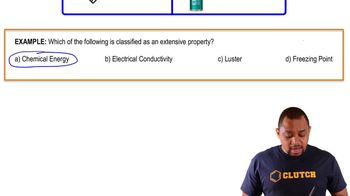An aqueous solution contains 1.2 mM of total ions. (b) If the solution is FeCl3(aq), what is the concentration of chloride ion?
State whether each of the following statements is true or false. Justify your answer in each case. (a) Electrolyte solutions conduct electricity because electrons are moving through the solution.
 Verified step by step guidance
Verified step by step guidance
Verified Solution
Key Concepts
Electrolytes

Electrical Conductivity

Ionic vs. Electronic Conduction

Which data set, of the two graphed here, would you expect to observe from a titration like that shown in Figure 4.18?
You are titrating an acidic solution with a basic one, and just realized you forgot to add the indicator that tells you when the equivalence point is reached. In this titration, the indicator turns blue at the equivalence point from an initially colorless solution. You quickly grab a bottle of indicator and add some to your titration beaker, and the whole solution turns dark blue. What do you do now?
State whether each of the following statements is true or false. Justify your answer in each case. (b) If you add a nonelectrolyte to an aqueous solution that already contains an electrolyte, the electrical conductivity will not change.
(a) Do colloids made only of gases exist? Why or why not?
(b) In the 1850s, Michael Faraday prepared ruby-red
colloids of gold nanoparticles in water that are still stable
today. These brightly colored colloids look like solutions.
What experiment(s) could you do to determine whether a
given colored preparation is a solution or colloid?
